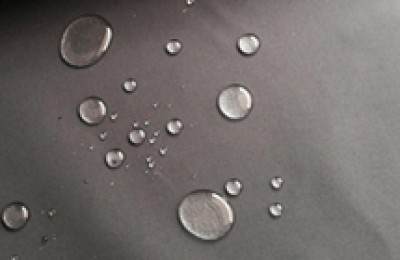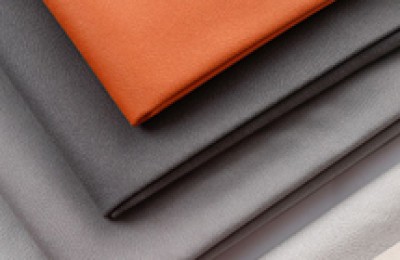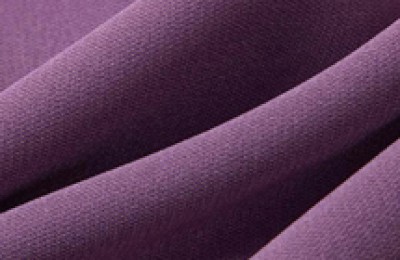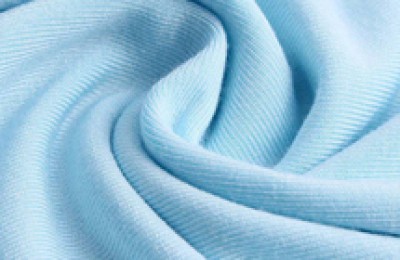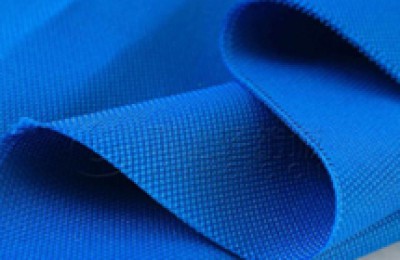Textile and clothing manufacturing refers to the activity of using textile fabrics as the main raw material, cutting and sewing various men’s and women’s clothing, as well as children’s clothing. Including clothing made from non-self-produced raw materials, as well as clothing production at fixed production locations. my country’s textile and apparel industry chain enterprises are more concentrated in Zhejiang, Jiangsu, Shandong, Xinjiang, Guangdong and other provinces. Before the outbreak, the overall market size of my country’s textile and apparel industry showed a growth trend, and it is expected to continue to grow after the economy and production recover in the future.
A panoramic overview of the textile and apparel industry chain
Textile was originally a general term for traditional hand-produced spinning and weaving, and now refers to natural fiber or chemical fiber Textiles are raw materials that are processed by hand or machine and are used in the manufacturing of clothing, home textiles, and industrial textiles. The fabrics used in clothing manufacturing are clothing textiles.
The process flow of textile clothing is as follows. First, natural fibers such as cotton and silk as well as chemical fibers are made into yarn through spinning. Then the yarn is used to weave into woven products or embryonic fabric products. Cloth products become various fabrics for making clothing after dyeing and other treatments. They are made into finished clothing by clothing manufacturers and finally delivered to clothing management and trading companies for sale.
The textile and clothing industry chain includes upstream raw material supply and manufacturing, midstream clothing manufacturing, and downstream clothing management and trading industries. The textile and clothing manufacturing industry uses textile fabrics as the main raw materials and sews various men’s, women’s and children’s clothing after cutting. The textile and apparel trade industry is an industry in which clothing traders purchase ready-made garments from clothing manufacturers or upper-level traders and sell them to end customers or lower-level traders. The important core factors of the textile and apparel industry are the mid- and upstream textile manufacturing parts, which are mainly exported to the export market. The core key points are: the enterprise’s equipment automation capabilities, technology research and development capabilities, cost and scale, and order stability; the downstream brand retail part : Focusing on the domestic domestic market, the core key points are: brand, product design, channels, supply chain, etc. Since there are many manufacturing links of textile and clothing, the number and type of enterprises related to the textile and clothing industry chain are relatively large.
Upstream – there is still a gap between cotton supply and demand
From the perspective of cotton supply, China’s cotton production is huge, accounting for about About 22% of the world’s cotton production, Xinjiang is my country’s main cotton production area, Xinjiang’s cotton production accounts for 80% of China’s total cotton production. The latest data from China Grain Reserve Management Group shows that as the world’s largest cotton consumer and second largest cotton producer, my country’s cotton output in 2020 will be approximately 5.91 million tons, with a total demand of approximately 7.8 million tons, and an annual gap of approximately 1.85 million tons. There are three major cotton producing areas in our country, namely Xinjiang cotton area, Yellow River basin cotton area, and Yangtze River basin cotton area.
From the perspective of the supply of chemical fibers, after more than half a century of development, China’s chemical fiber market has now formed a market pattern in which domestic sales are the mainstay and synthetic fibers are the mainstream products. The development trend of China’s chemical fiber industry is good. Chemical fiber output has maintained the first place in the world for a long time after 1998. From 2016 to 2020, my country’s chemical fiber output has shown an overall growth trend. In 2020, my country produced a total of 61.68 million tons of chemical fiber, a year-on-year increase of 3.61%.
Midstream – Textile and clothing export processing still accounts for the mainstream
The main entities in the midstream are clothing textile enterprises and garment manufacturing enterprises. The midstream of China’s apparel and textile industry involves many links, including the production of yarn, cloth and fabrics. The production processes of different links are different, and most clothing and textile companies are only involved in some of them. For example, Luthai Textile, a listed textile company, is mainly engaged in fabric production and clothing production downstream of the industry.
Natural fibers, chemical fibers and other raw materials are processed by garment and textile enterprises to make fabrics. The garment and textile enterprises then provide the fabrics to garment manufacturing enterprises, which process them into finished garments according to the design and send them to Brands or consumers.
There are three modes of midstream clothing production: OEM, ODM, and OBM, and the gross profit margin increases in sequence. At present, from the perspective of terminal revenue of my country’s industry, about 60% comes from export processing and manufacturing, and 40% comes from domestic brand retail, but the latter’s proportion is gradually increasing.
Judging from the overall revenue of listed companies in my country’s textile and garment industry, thanks to the steady growth of China’s economy from 2014 to 2019, residents Clothing consumption continues to rise, prompting the market size of China’s clothing and textile industry to continue to grow. In 2019, the overall revenue of listed companies in my country’s textile and clothing industry was 343.89 billion yuan, a year-on-year increase of 19.66%.
Due to the epidemic in 2020, the number of delays and cancellations of orders in the textile and apparel industry increased, resulting in a decline in industry revenue.In the first three quarters of 2020, the total revenue of listed companies in my country’s textile and garment industry was 1,756.52, a year-on-year decrease of 8.31%.
Downstream – fierce competition among various clothing brands
The downstream of China’s clothing and textile industry chain is clothing brand traders and other clothing Management and trading enterprises, China’s clothing industry has many subdivisions, including men’s clothing, women’s clothing, sportswear, casual wear, etc., resulting in the large number of Chinese clothing companies and fierce market competition. However, the customer groups, customer consumption habits and market development stages of each clothing segment are different, and their market competition patterns are very different, as shown below:
From my country’s limit and above In terms of the retail value of clothing products, from 2014 to 2020, my country’s overall clothing retail sales showed a trend of first increasing and then decreasing. In the first half of 2020, affected by the epidemic, production demand in the clothing industry decreased, and orders were often delayed or canceled, which further hindered the overall recovery of my country’s clothing industry. According to data from the National Bureau of Statistics, in 2020, the retail sales of clothing products above designated size in my country The amount was 882.4 billion yuan, a year-on-year decrease of 9.76%. For apparel companies currently facing difficulties, the top priority is to implement internal controls, reduce inventory, and make mid- and long-term sustainable development plans.
The regional distribution of the textile and clothing industry chain enterprises are concentrated in the eastern and southern regions
According to the search results of Qichamao, my country’s textile industry The thermal distribution of the clothing industry is as follows. The provinces with higher industry thermal value are Shandong Province, Guangdong Province, Jiangxi Province, Jiangsu Province, and Zhejiang Province, followed by Hebei Province, Hubei Province, Shaanxi Province, and Xinjiang Autonomous Region in the second echelon. Jiangsu, Shandong, Jiangxi and other provinces mainly have a group of clothing textile manufacturing companies and garment manufacturing companies. Guangdong Province has a group of clothing trading companies. The Xinjiang Autonomous Region has more companies that supply raw materials such as cotton.
Judging from the regional distribution map of representative enterprises in my country’s textile and clothing industry chain, industry chain enterprises are concentrated in the eastern and southern coastal areas of my country and Xinjiang and other raw material production areas. In comparison, enterprises in Zhejiang Province and Jiangsu Province have a wider coverage in the industrial chain and can basically cover the upstream, middle and lower reaches of the textile and clothing industry chain. Representative enterprises in the industrial chain of other provinces such as Fujian Province, Shandong Province and Guangdong Province are Mainly fabric and clothing trading enterprises.
The development prospects of the textile and clothing industry are still good
China’s clothing and textile raw material market has continued to make progress in terms of scale, technology and other aspects in recent years, providing opportunities for clothing and textile industry Lay the foundation for the development of the industry. As an important natural fiber, cotton’s market price and exchange rate fluctuations will directly affect the development of the clothing and textile industry. In addition, the steady growth of China’s economy has contributed to the continuous increase in the income of Chinese residents. The increase in residents’ clothing consumption and the diversification of clothing demand have promoted the continued expansion of the scale of the clothing and textile industry.
In terms of technology, technological progress promotes the development of the industry. With the advent of the Industry 4.0 era, as well as the application and development of technologies such as the Internet, big data, AI, and the Internet of Things, the clothing and textile industry has improved its product production and sales channels. , product research and development and other aspects have made significant progress.
The “14th Five-Year Plan” textile and apparel industry will be based on my country’s new modern development goals and the new “dual cycle” development pattern with the domestic cycle as the main body, and adhere to the path of technology-driven, fashion-led, and green-oriented On the basis of this, with independent technological innovation and industrial structure adjustment as the core guidance, we will further promote high-quality development, strengthen the industrial foundation, and optimize the industrial system. Accordingly, it is expected that the operating income of listed companies in my country’s textile and apparel industry will increase to approximately 418.8 billion yuan in 2026.
Article source: Qianzhan Industry Research Institute</p



